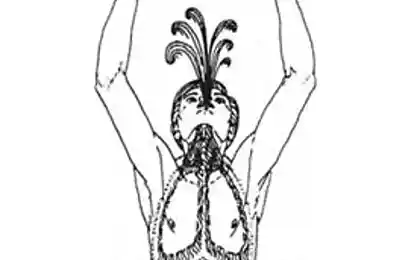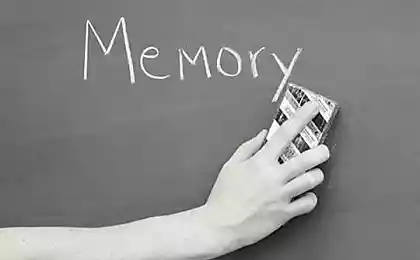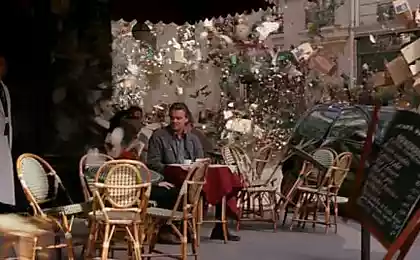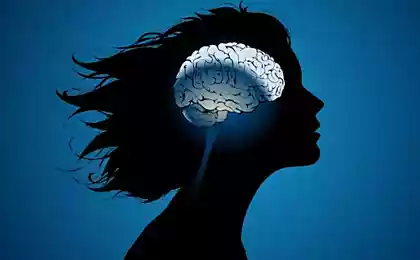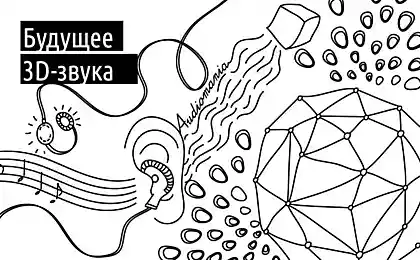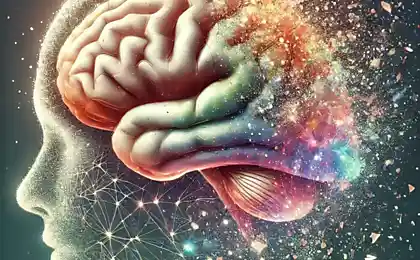184
How to quickly remember what you need: the advice of neuropsychologists
Surely everyone faced a situation where you need to quickly remember something, but it does not work.
Neuropsychologists claim that our brains remember everything we have ever seen. Even when you feel like information has been erased from your memory forever. Just pull the right strings, and the memory will come to the surface in all the details.
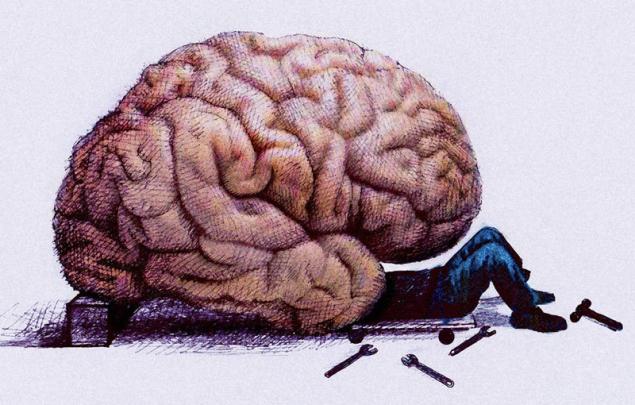
It seems incredible that The brain remembers everything the eyes see.. Science confirms this fact. So, in the early 1970s, the famous experiment (Lionel Standing) was conducted. Ordinary people were shown 10,000 pictures at a fast pace. For example, one depicted Muhammad Ali, the other – dumbbells, then the footprint of Neil Armstrong on the moon, then the cover of Friedrich Nietzsche’s book “Genealogy of Morals”, then the red rose, etc. Ten thousand pictures! (The test took a whole week to complete.)
It would seem that such a volume of information will not fit in any head. However, ordinary people were able to remember more than 80% of the images.
The trick is to get information from memory correctly.
At the recollection stage, the pictures were shown in pairs: One of them was seen before and the other was not. For example, on the left was a picture of Muhammad Ali and on the right was a sizzling Alka-Seltzer pill. The subjects had to recognize a picture they had already seen. Most of them did the job without any difficulty.
In the early 2000s, the experiment was repeated in a more complex version (Timothy F. Brady, Talia Konkle). Participants had to make a choice between two almost identical pictures: say, on the right there was a picture of a pack of five-dollar bills, and on the left there was a pack of dollar bills; on the right there was a green car, and on the left there was a red car; on the right there was a bell with a thin tongue, and on the left there was a bell with a thick tongue.
They found that even when images differ in minor details, people still recognize almost 90% of the images.
We do not forget anything, but we are not always able to extract the necessary data from our storage facilities. The history of neuropsychology knows only one case in which a person had direct access to his memory. At the beginning of the XX century, the famous Soviet neuropsychologist Alexander Luria observed a unique man named Solomon Shereshevsky (later he wrote a book about him “A Little Book on Big Memory”. The mnemonic mind.
Shereshevsky easily memorized a page written in numbers, and could reproduce them without a hesitation both in direct and in reverse order. He remembered both meaningful words and meaningless syllables, numbers or sounds spoken aloud or written on paper. He could memorize complex formulas with no knowledge of mathematics or Italian poetry, no knowledge of Italian. Shereshevsky did not forget anything even after a while (and suffered greatly from it!). Even 16 years later, he was giving out information with amazing accuracy.
The peculiarity of his memory was that he involuntarily created a visual image for every word or sound heard. (And the images, as we have seen, remain with us forever.)
Okay, Each sound had its own color., structure and sometimes even taste. One man's voice seemed to him "yellow and crumbly," while the voice of another he described as "as if some flame with veins was coming at me."
The numbers had a face for him: For example, “one” is a proud slim person, “two” is a cheerful woman, “four” is a person with a swollen leg, “seven” is a person with a mustache, “eight” is a very full woman, a bag on a bag, etc. When he heard "87," a full woman appeared before his mind's eye next to a man who was twisting a mustache.
Shereshevsky could numb the toothache: It seemed like a red thread that bothered him. The pain increased - the thread became thicker. Then he imagined how the thread becomes thinner and thinner, and then dissolves in the air, the pain passed.
Words filled Shereshevsky’s mind with mental images without effort on his part – instantly and automatically. That was his phenomenal character.
An ordinary person needs to create such images consciously – and then the result of memorization will be as good as Shereshevsky’s.
How did Shereshevsky manage to easily extract from his memory everything he wanted? The nonlinear associative nature of our brain makes it impossible to consciously retrieve memories in the proper order. The average person, to remember someone’s name, for example, needs some kind of association or at least a vague feeling: “It seems to begin with an “L”, so strange, something African ... ah! her name is Liana!”
Memory does not follow the laws of linear logic, so we cannot view information sequentially.
In Shereshevsky’s head, memories were arranged like cards in a catalog. The fact is that he carefully organized the information, putting it on a map of familiar places in the sequence in which he received it (again, he did this involuntarily, without realizing it). For example, reading a long series of words, he visualized each word and placed these images along Gorky Street in Moscow or around his house in Torzhka. The first - in the door of the house, the second - at the street lamp, the third - on the fence, the fourth - in the garden, the fifth - in the shop window. To remember the whole row, Shereshevsky mentally walked down the street and looked around.
Shereshevsky’s incredible abilities lie dormant within each of us. Although it seems absolutely incredible to keep in mind a huge amount of information, but in fact, It's just a well-developed spatial memory that everyone has and can develop..
If you find yourself in London, pay attention to the boys on scooters, who have a map of the city attached to the steering wheel. These are not tourists, but future taxi drivers. To get accreditation from the city to manage public transport, they must pass a difficult exam: find the shortest path between two points and name all the sights encountered along the way. It takes young people two to four years to prepare for the test. As a result, they remember the location and features of traffic on all 25,000 streets of the city. With such an impressive map in their heads, these people are able to remember anything!
P.S. And remember, just changing our consumption – together we change the world!
Source: www.knigikratko.ru/news/lichnaya-effektivnost/kak-bystro-vspomnit-to-chto-vam-nuzhno-sovet-nejropsihologov
Neuropsychologists claim that our brains remember everything we have ever seen. Even when you feel like information has been erased from your memory forever. Just pull the right strings, and the memory will come to the surface in all the details.

It seems incredible that The brain remembers everything the eyes see.. Science confirms this fact. So, in the early 1970s, the famous experiment (Lionel Standing) was conducted. Ordinary people were shown 10,000 pictures at a fast pace. For example, one depicted Muhammad Ali, the other – dumbbells, then the footprint of Neil Armstrong on the moon, then the cover of Friedrich Nietzsche’s book “Genealogy of Morals”, then the red rose, etc. Ten thousand pictures! (The test took a whole week to complete.)
It would seem that such a volume of information will not fit in any head. However, ordinary people were able to remember more than 80% of the images.
The trick is to get information from memory correctly.
At the recollection stage, the pictures were shown in pairs: One of them was seen before and the other was not. For example, on the left was a picture of Muhammad Ali and on the right was a sizzling Alka-Seltzer pill. The subjects had to recognize a picture they had already seen. Most of them did the job without any difficulty.
In the early 2000s, the experiment was repeated in a more complex version (Timothy F. Brady, Talia Konkle). Participants had to make a choice between two almost identical pictures: say, on the right there was a picture of a pack of five-dollar bills, and on the left there was a pack of dollar bills; on the right there was a green car, and on the left there was a red car; on the right there was a bell with a thin tongue, and on the left there was a bell with a thick tongue.
They found that even when images differ in minor details, people still recognize almost 90% of the images.
We do not forget anything, but we are not always able to extract the necessary data from our storage facilities. The history of neuropsychology knows only one case in which a person had direct access to his memory. At the beginning of the XX century, the famous Soviet neuropsychologist Alexander Luria observed a unique man named Solomon Shereshevsky (later he wrote a book about him “A Little Book on Big Memory”. The mnemonic mind.
Shereshevsky easily memorized a page written in numbers, and could reproduce them without a hesitation both in direct and in reverse order. He remembered both meaningful words and meaningless syllables, numbers or sounds spoken aloud or written on paper. He could memorize complex formulas with no knowledge of mathematics or Italian poetry, no knowledge of Italian. Shereshevsky did not forget anything even after a while (and suffered greatly from it!). Even 16 years later, he was giving out information with amazing accuracy.
The peculiarity of his memory was that he involuntarily created a visual image for every word or sound heard. (And the images, as we have seen, remain with us forever.)
Okay, Each sound had its own color., structure and sometimes even taste. One man's voice seemed to him "yellow and crumbly," while the voice of another he described as "as if some flame with veins was coming at me."
The numbers had a face for him: For example, “one” is a proud slim person, “two” is a cheerful woman, “four” is a person with a swollen leg, “seven” is a person with a mustache, “eight” is a very full woman, a bag on a bag, etc. When he heard "87," a full woman appeared before his mind's eye next to a man who was twisting a mustache.
Shereshevsky could numb the toothache: It seemed like a red thread that bothered him. The pain increased - the thread became thicker. Then he imagined how the thread becomes thinner and thinner, and then dissolves in the air, the pain passed.
Words filled Shereshevsky’s mind with mental images without effort on his part – instantly and automatically. That was his phenomenal character.
An ordinary person needs to create such images consciously – and then the result of memorization will be as good as Shereshevsky’s.
How did Shereshevsky manage to easily extract from his memory everything he wanted? The nonlinear associative nature of our brain makes it impossible to consciously retrieve memories in the proper order. The average person, to remember someone’s name, for example, needs some kind of association or at least a vague feeling: “It seems to begin with an “L”, so strange, something African ... ah! her name is Liana!”
Memory does not follow the laws of linear logic, so we cannot view information sequentially.
In Shereshevsky’s head, memories were arranged like cards in a catalog. The fact is that he carefully organized the information, putting it on a map of familiar places in the sequence in which he received it (again, he did this involuntarily, without realizing it). For example, reading a long series of words, he visualized each word and placed these images along Gorky Street in Moscow or around his house in Torzhka. The first - in the door of the house, the second - at the street lamp, the third - on the fence, the fourth - in the garden, the fifth - in the shop window. To remember the whole row, Shereshevsky mentally walked down the street and looked around.
Shereshevsky’s incredible abilities lie dormant within each of us. Although it seems absolutely incredible to keep in mind a huge amount of information, but in fact, It's just a well-developed spatial memory that everyone has and can develop..
If you find yourself in London, pay attention to the boys on scooters, who have a map of the city attached to the steering wheel. These are not tourists, but future taxi drivers. To get accreditation from the city to manage public transport, they must pass a difficult exam: find the shortest path between two points and name all the sights encountered along the way. It takes young people two to four years to prepare for the test. As a result, they remember the location and features of traffic on all 25,000 streets of the city. With such an impressive map in their heads, these people are able to remember anything!
P.S. And remember, just changing our consumption – together we change the world!
Source: www.knigikratko.ru/news/lichnaya-effektivnost/kak-bystro-vspomnit-to-chto-vam-nuzhno-sovet-nejropsihologov
How to come up with the story together with children: tips Gianni Rodari:
41 — it's not just about age

